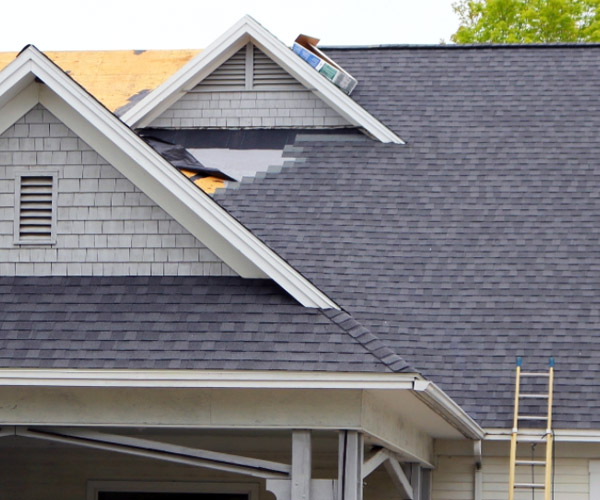Work with a professional Sylvania Roofing Contractor to enhance the durability of your roof.
How to Evaluate Different Roof Covering Alternatives for Your Structure Needs
Reviewing roof covering alternatives for your structure requires an extensive technique that thinks about numerous factors such as the planned use the framework, regional climate conditions, and material attributes. It is necessary to weigh the benefits and drawbacks of different roof covering types, from asphalt shingles to steel and clay ceramic tiles, while likewise factoring in preliminary costs and long-term upkeep. Additionally, understanding power effectiveness and aesthetic charm can influence your choice. As you ponder these considerations, one inquiry stays: which variables will eventually lead your selection for a sustainable and visually pleasing roof service?
Assessing Your Structure's Needs
To successfully assess roof covering choices, begin by completely assessing your structure's requirements. Beginning by thinking about the structure's intended usage, as different structures might require varying roof requirements. Household roofing systems commonly focus on aesthetic appeals and insulation, while industrial buildings may focus on longevity and load-bearing ability.
Following, assess the local climate problems that will impact roof performance. Elements such as temperature fluctuations, rainfall levels, and wind patterns can affect material choice and style. A roof system that masters a pleasant climate may not perform too in areas prone to hefty snowfall or severe warm.
Furthermore, assess the architectural integrity of your structure. Make certain that the existing framework can sustain the chosen roof materials, specifically if considering heavier alternatives. It is likewise critical to assess any regional building codes or policies that might dictate specific needs for roof.

Comparing Roofing Products
As soon as a comprehensive analysis of your building's needs has been finished, the next step includes comparing different roof covering products. Each material provides distinctive benefits and downsides, making it important to align your option with your particular requirements and situations.
Asphalt tiles are commonly acknowledged for their cost and convenience of installment, making them a prominent option for property buildings. On the other hand, steel roof covering, recognized for its sturdiness and longevity, can endure severe weather but may include a greater first financial investment.
Clay and concrete tiles supply outstanding thermal insulation and visual appeal, particularly for Mediterranean-style architecture, yet they need an even more robust architectural assistance because of their weight. Wood drinks offer an all-natural look and good insulation properties yet might demand a lot more maintenance and are prone to fire hazards.
Assessing Price and Spending Plan
Assessing your roofing options demands a careful examination of cost and budget plan considerations. The overall budget plan for a roof task consists of a number of aspects, consisting of product expenses, labor costs, maintenance, and potential lasting cost savings. click for info It is vital to develop a clear spending plan before exploring particular roof products, as this will certainly lead the decision-making process and assist you avoid overspending.
Begin by getting quotes from several specialists to understand labor prices in your region. Ensure that these quotes consist of all required services, such as removal of the old roof, installation, and any type of added attributes, like insulation or ventilation renovations - Perrysburg Roofer. Next off, examine the price of various roofing materials, taking into consideration both preliminary installment costs and anticipated lifespan

Recognizing Power Effectiveness
Power efficiency plays a crucial role in the choice of roof products and systems, considerably influencing both power usage and total comfort within a building. A well-chosen roofing system can boost thermal performance, lowering the demand for heating and cooling systems, which in turn decreases energy bills and reduces environmental effect.
When reviewing roof options, consider products that show as opposed to take in warm. Light-colored or reflective roof covering items can significantly lower roof surface temperature levels, causing reduced power usage throughout hot months. Furthermore, proper insulation and ventilation are necessary to maximize the power performance of the entire roof system. Insulation stops heat transfer, while ventilation minimizes warmth buildup in the attic space.
One more vital aspect is the roof covering system's longevity and maintenance requirements. Resilient products that need less regular replacement contribute to long-lasting energy financial savings. The energy efficiency of a roofing system can likewise be examined with its compliance with established sustainability rankings such as ENERGY STAR or LEED.
Considering Visual Allure
A roofing system's visual appeal substantially affects the overall look use this link of a building, complementing its building style and boosting aesthetic charm. Toledo Roofer. When reviewing roof choices, it is necessary to take into consideration just how the chosen material, shade, and style will certainly balance with the existing structure and area. A properly designed roofing can raise even the easiest of structures, transforming them right into visual centerpieces
Different roof products offer numerous visual qualities. For instance, standard tiles may stimulate a traditional click for source charm, while metal roof can impart a modern-day, streamlined appearance. Furthermore, the color of the roof covering material plays an essential function; lighter shades can make a structure appear even more spacious, while darker tones might create a cozier setting.
Additionally, building components, such as dormers and eaves, can boost the roofing system's visual impact. It is advisable to seek advice from specialist developers or engineers to ensure the selected roofing option aligns with the general design intent. Ultimately, a roof needs to not only supply functional advantages however likewise contribute favorably to the structure's visual, showing the proprietor's taste and the character of the surrounding atmosphere.
Conclusion
